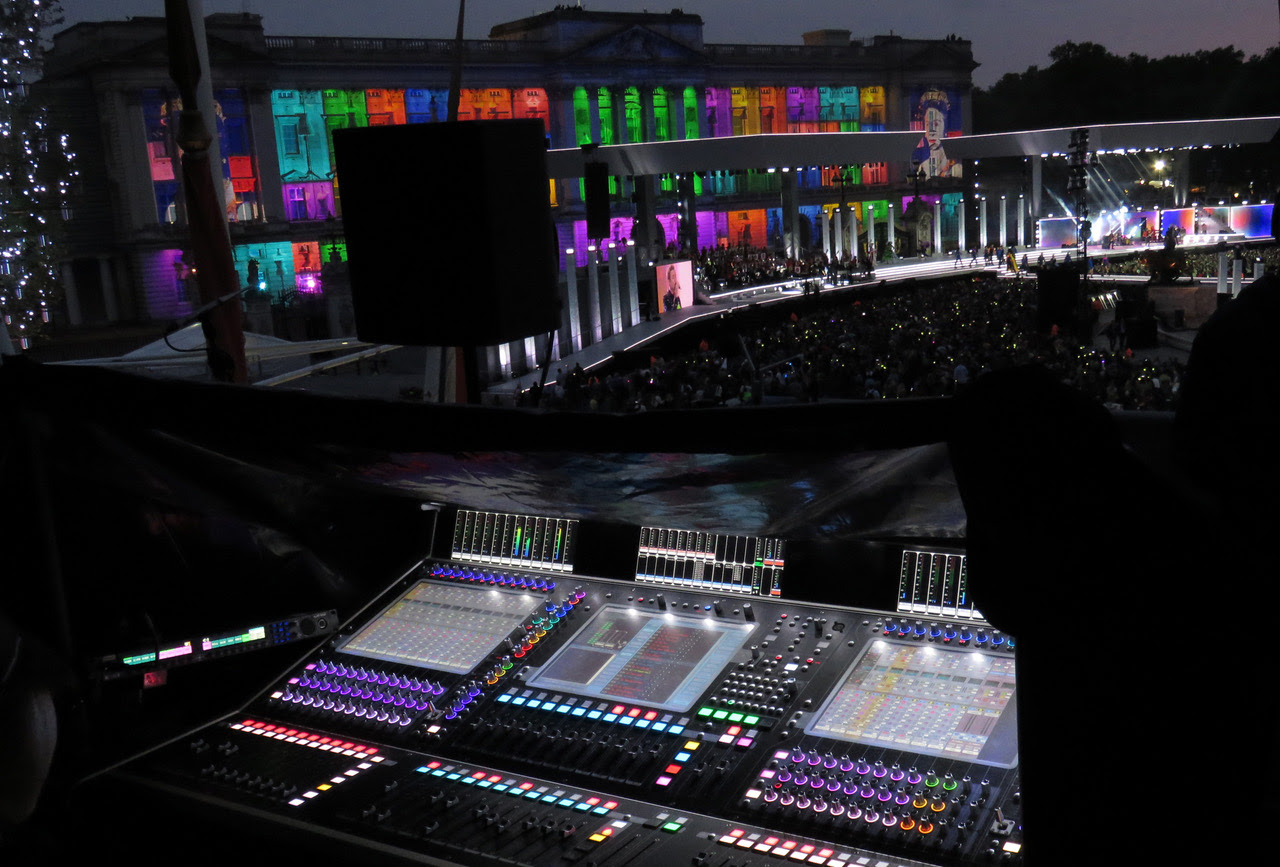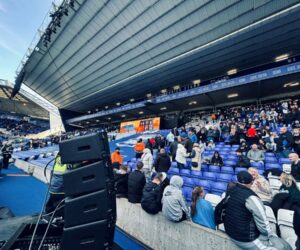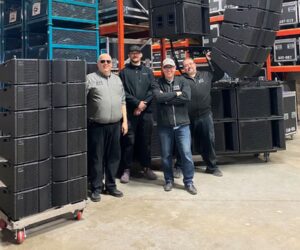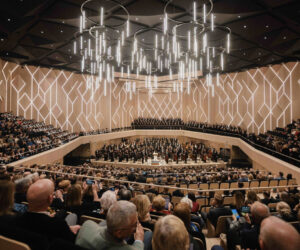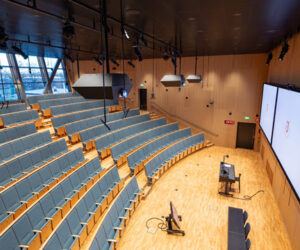The Queen’s Platinum Jubilee celebrations took place at the beginning of June in London was headlined by the Jubilee Concert, staged by BBC Studios for a live audience of 22,000 and broadcast to over 13 million viewers, with DiGiCo consoles playing a central role in an audio design by Ben Milton Associates that managed three discrete stages and complex time alignment.
Audio rental company Britannia Row Productions was appointed to handle this significant logistical challenge, which took place in the environs of Buckingham Palace with the audio system for the landmark show spread across three independent stages in front of the Palace. The first stage, designed as a catwalk in the round, was constructed around the Queen Victoria Monument (QVM), with two further stages erected in front of the palace railings and linked to the circular stage by a walkway, one hosting orchestral-based content and the other rock and pop acts.
“Everything was time-aligned between each stage, including synchronizing when artists were performing from two stages simultaneously,” explains sound designer Ben Milton. “For instance, if there was a performer on the QVM stage, complemented with the orchestra on the second stage, we wanted to make sure the sound image would be coming from the right place, and timed to work together. Balancing the sound image and time synchronization was our highest priority.”
DiGiCo consoles were installed throughout front of house and monitor positions, managing the performances of artists such as Queen and Adam Lambert, Ed Sheeran, George Ezra, Duran Duran, Craig David, and Andrea Bocelli, with three broadcast trucks allocated one per stage. The audio system’s full console list included five Quantum7 and three Quantum338 consoles from DiGiCo’s high-end range, alongside an SD5, SD10, and the compact SD11i from the SD-Range, with 19 supporting SD-Racks, five SD-MiNi Racks and several DMI card-equipped Orange boxes.
Further, Quantum7 consoles were installed either end of the Orchestral stage, managed by Simon Fox at FOH and Billy Birks on monitors. On the north Rock and Pop stage, a Quantum7 was selected for FOH and a Quantum7 for monitors, manned by Stefano Serpagli and Phil Down, respectively. Finally, on the QVM stage, an SD10 was chosen for FOH, managed by Chris Vass, and a Quantum338 at monitors for James Neale.
All the FOH boards were fed into a separate Quantum7 console, which acted as a matrix mixer, and from there into a TiMax immersive spatial system for distribution via an L-Acoustics PA system. Each FOH console could send feeds to its own dedicated OB truck for broadcast duties, one of which was installed with an SD7, and mixes could be returned to stage from FOH for monitor mixes. The team utilized gain sharing on the orchestra stage as it had a huge channel count of 192. All monitor consoles across the stages had access to feeds from every other stage, so they could dovetail from the stage before them to the stage after, selecting any inputs and content they needed for their mix.
“This design meant I could navigate all the busses through the master Quantum7 console, so the engineers had the choice of which buss to use, so it would all be time synchronized. Also, if there were any last minute staging changes, we could just reallocate the buss,” explains Milton. “The matrix Quantum7, additionally took all guest speaker mic feeds and VT packages, which could be placed on top of whatever else was coming through, and the monitor access was managed by bussing everything through the Quantum7. It played out like a choreographed performance — busing all FOH feeds in that manner, with all three stages mixed independently for the broadcast trucks, and then the celebrity guest speakers could be mixed in around it.”
“It was DiGiCo’s bus structure that made the timeline synchronization possible. Being able to organize settings in a particular way was a huge advantage, whether the consoles were used for delay for one part of the show, or as the main system on another part as the action rolled from stage to stage,” notes Josh Lloyd, head of engineering – event support at Brit Row. “DiGiCo also offered great flexibility and built-in redundancy, as not only was the Quantum7 master console running Dante, we also had several Orange boxes offering a wealth of network options. For things that were show-critical, being able to support multiple formats was a huge advantage, as we needed to connect MADI, Dante, AES, and analog devices.”
Following a detailed pre-production period, the onsite set up was swift due to DiGiCo’s offline planning and design tools. The event schedule stretched over four days, with Trooping of the Color and Lighting of the Beacons on Thursday, full dress rehearsal on Friday, pre-show on the Jubilee Concert on Saturday, and the Pageant show and Mall procession on Sunday.
The cable runs for the events were long — some up to 300 meters to the stage – but as DiGiCo operates on Optocore, the team was able to connect all the consoles to the Optocore Festival box and run them back through two fiber-optic cables. Some of the DiGiCos were located at a distance from their stage boxes. For example, the Queen monitor consoles and the QVM monitor console were 100 to 150 meters from their stage boxes.
“The Optocore Festival box and its easy plug-and-play integration was definitely a highlight for us,” says Tom Brown, Brit Row account manager. “DiGiCo’s ability to drop things on to the Optocore network, to have I/O locally and also remotely, really helped. The ability to move things around the loop was very helpful. For instance, we could have analog outboard next to the monitor console, yet the in-ear devices local to the performer.”
“DiGiCo is always my first choice, so I always knew DiGiCo was part and parcel of the event from the outset,” says Milton. “All the engineers were comfortable with it and all the acts used the concert boards – it’s a rider-pleaser. I didn’t have to bring in any other consoles, apart from for Queen who wanted to use their own touring consoles, which happened to be two Quantum338s – one for Adam and one for everyone else – plus an SD5 at FOH. It was great to work with Brit Row and have them on board for the technical deployments.”


